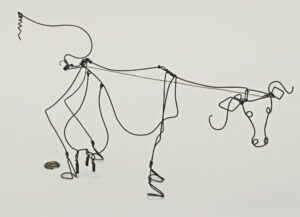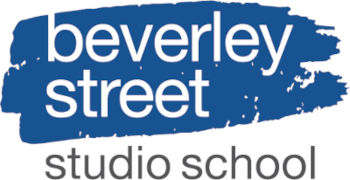Spring 2023 : Class : Figure and Landscape into Still Life: Elizabeth Geiger
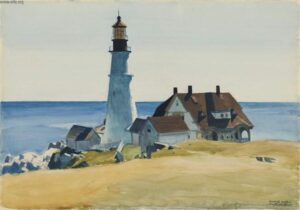
How can you use the work of the Masters to inform your own painting? This 5 week course will address still life composition by studying paintings from other genres – figurative painting and landscape – to increase creative visual problem solving with the help of painters from art history. By removing the literalness of subject matter and focusing instead on abstract design principles, painters start to internalize ways of relating parts to the whole and to create aggregate shapes which help us all expand beyond our predictable default choices. Most of the greatest painters learned this way – by visiting museums and digesting what they saw. Each participant will choose one figurative image (then one landscape), study its underlying geometry and divisions, draw from it, then set up parallel still life in response to it, finally painting that set up with the image nearby. The goal is to practice dissecting and translating a painting, so as to use this process in your own studio practice.
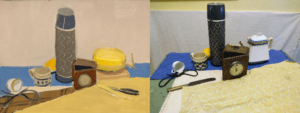
Summer 2023 : Class : Plan a Working Vacation: An Intense Introduction to Beginner Drawing & Painting: Janly Jaggard
Summer 2023 : Class : Principles of Three Movements in Art History: Classical, Baroque, and Modern: Elizabeth Geiger
Summer 2023 : Class : Plein Air Painting in Watercolor: Peg Sheridan
Fall 2023 : Class : BEGINNER/ INTERMEDIATE DRAW AND PAINT – SESSION II: Janly Jaggard
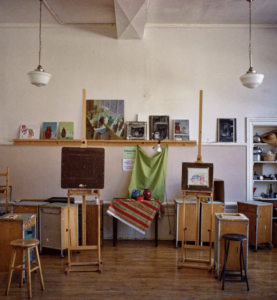 This course puts emphasis on drawing and painting from observation as the essential means by which we understand the formal elements and how to apply them to our practice as beginner artists. Drawing is where to begin and continues to be a critical process throughout one’s art journey regardless of medium or genre. This 5 week course is also suited for intermediate students who wish to begin developing personal style with work that begins with visual research but can be taken in several directions. Each student is taught one-on-one which allows for personalized projects, mainly focusing on drawing mediums or painting in acrylics or oils.
This course puts emphasis on drawing and painting from observation as the essential means by which we understand the formal elements and how to apply them to our practice as beginner artists. Drawing is where to begin and continues to be a critical process throughout one’s art journey regardless of medium or genre. This 5 week course is also suited for intermediate students who wish to begin developing personal style with work that begins with visual research but can be taken in several directions. Each student is taught one-on-one which allows for personalized projects, mainly focusing on drawing mediums or painting in acrylics or oils.
Spring 2023 : Lecture : Misa K. Stuart: Introduction to Japanese Performing Arts, Part I 雅楽Gagaku: Ancient Court Music and Dance: Misa Kobayashi Stuart
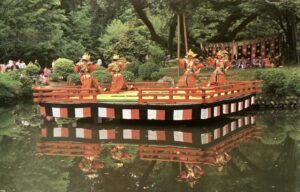 Learn about Gagaku, Imperial Court Music, the oldest Japanese music ensemble in the world! It has survived over 1,000 years without much alteration. Its repertoire is both Japanese indigenous music and dance, as well as music and dance transmitted from China, Korea, Vietnam and beyond between the 5th and 9th c. It has mainly been preserved and performed at the Imperial Court, but is also performed during rituals and ceremonies at shrines and temples, and plays a significant role in Japanese society even now.
Learn about Gagaku, Imperial Court Music, the oldest Japanese music ensemble in the world! It has survived over 1,000 years without much alteration. Its repertoire is both Japanese indigenous music and dance, as well as music and dance transmitted from China, Korea, Vietnam and beyond between the 5th and 9th c. It has mainly been preserved and performed at the Imperial Court, but is also performed during rituals and ceremonies at shrines and temples, and plays a significant role in Japanese society even now.
Topics, aided by audio visual presentation, will include: historical and cultural background in relation to the development of Gagaku; how it was transmitted for generations; instruments and scores; the influence of Gagaku on composers Benjamin Britten and Olivier Messiaen.
→ Gagaku was designated in 2009 as a UNESCO World Intangible Cultural Heritage.
Spring 2023 : Lecture : Misa K. Stuart: Introduction to Japanese Performing Arts, Part II 能楽Noh Theater: Misa Kobayashi Stuart
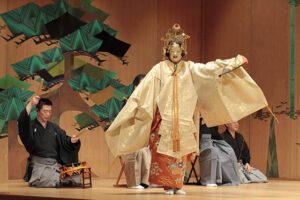 Many of you have seen Noh masks and costumes in art museums. But what is Noh? Noh Theater is a highly stylized, masked, dance drama accompanied by chants and music. It has been continuously performed in Japan for about 600 years, but its roots can be traced back further to humbler entertainments such as storytelling, acrobats, magic, etc. How then, with this humble origin, was Noh transformed into such sophisticated artistic drama?
Many of you have seen Noh masks and costumes in art museums. But what is Noh? Noh Theater is a highly stylized, masked, dance drama accompanied by chants and music. It has been continuously performed in Japan for about 600 years, but its roots can be traced back further to humbler entertainments such as storytelling, acrobats, magic, etc. How then, with this humble origin, was Noh transformed into such sophisticated artistic drama?
In this program, aided by visual and audio presentation, we will examine the history, stage design, music, masks and costumes of Noh Theater. Our topic will also include Benjamin Britten’s Curlew River, an opera inspired by the Noh drama, Sumidagawa.
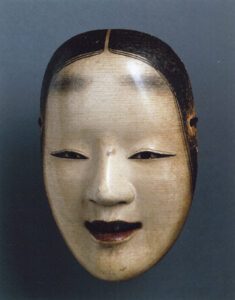
→ Noh theater was designated in 2001 as a UNESCO World Intangible Cultural Heritage.
Spring 2023 : Class : The Next Step: Janly Jaggard
You have already learned and are well practiced in the use of the formal elements and can successfully apply these to your artwork. If this is so, you might be ready to TAKE the NEXT STEP and to build towards personal style. You may well have already selected your medium of choice for continued practice.
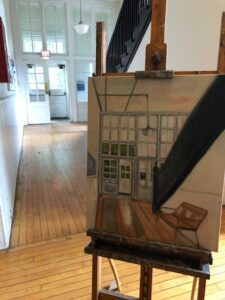 In this short series of intense studio classes we can search for what interests you most about medium, method and subject. Anything is possible provided you have serious intent.
In this short series of intense studio classes we can search for what interests you most about medium, method and subject. Anything is possible provided you have serious intent.
I will discuss work with each student one-on-one so your journey is personal to your own objectives although class critique and discussion are part of the program.
Students will be strongly encouraged to work independently between the 4 class meetings and to share that work with the class.
Spring 2023 : Class : Art as Exploration: Robert Stuart
Participants’ work in any media, including 3-D, will be reviewed with constructive criticism to foster a deepening discernment of strengths and challenges.
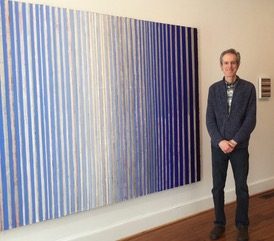 The class includes a visual presentation and discussion of works by historical and contemporary artists, especially from current museum and gallery exhibitions and art reviews.
The class includes a visual presentation and discussion of works by historical and contemporary artists, especially from current museum and gallery exhibitions and art reviews.
By broadening awareness of our cultural heritage, we enrich our own works, gain new insights to develop our own voice.
Minimum number of students: 6 – maximum: 9
“I love this class so much because I get to see what other people do and I value the input given about my work. Plus I learn so much from being exposed to the many works you show us. Thanks for all your effort.” Nina Ozbey
Winter 2023 : Class : The Next Step – Session 2: Janly Jaggard
You have already learned and are well practiced in the use of the formal elements and can successfully apply these to your artwork. If this is so, you might be ready to TAKE the NEXT STEP and to build towards personal style. You may well have already selected your medium of choice for continued practice.
 In this short series of intense studio classes we can search for what interests you most about medium, method and subject. Anything is possible provided you have serious intent.
In this short series of intense studio classes we can search for what interests you most about medium, method and subject. Anything is possible provided you have serious intent.
I will discuss work with each student one-on-one so your journey is personal to your own objectives although class critique and discussion are part of the program.
Students will be strongly encouraged to work independently between the 4 class meetings and to share that work with the class.
Winter 2023 : Workshop : Pathways to ABSTRACTION: Javier Tapia
Arriving at a commitment for utilizing Abstraction as a system for expression is a long and complex process. Fortunately there are several issues that we can identify during this two day workshop that can help us elucidate and explain Abstraction as a mode for expression to produce artworks in a meaningful and powerful way.
We can begin to establish a set of important questions and observations that allow us to think more deeply and see with more clarity.
In order to ‘arrive’ at this special kind of ‘seeing’ one must try to begin by setting aside, ‘final’ a-priori answers that derive from ‘theories’, old and new, and the non-visual languages. The principle at play here is to continue to sensitize the eye, to focus on the visual formal tools being used, and to carefully examine what each of these ‘tools’-(line, format, scale, thick, thin, ease, release, color, surface, etc)-within this convention, are visually ‘doing’. The idea that should prevail for our two days is working towards taking big chances by adding ‘things’ to our work we previously did not allow ourselves to do.
This studio workshop will highly consider a critique element. It will also include an hour powerpoint presentation (on my work) as a springboard to begin to get a few ideas in the open, particularly regarding a personal history, on development of form, content and personal growth.
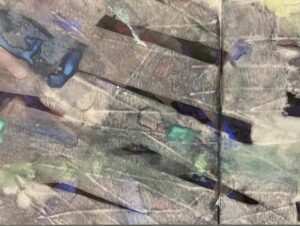 Participants should bring to the studio a work they consider “finished” or a series of images/photos (10) that are representative of what they have done for the past year. (We will have a short individual/group conversation about these works).
Participants should bring to the studio a work they consider “finished” or a series of images/photos (10) that are representative of what they have done for the past year. (We will have a short individual/group conversation about these works).
Participants are also encouraged to arrive with a project in mind (“invention of shapes”, for instance) or develop one during the workshop. We can have a short conversation about your initial thoughts, to provide you with a starting point.
Participants should choose a painting medium they feel familiar with. These may include: Oil, Acrylic or Watercolor.
Javier Tapia Image Courtesy of Reynolds Gallery
Winter 2023 : Workshop : How to Loosen Up Your Paintings: LYNN MEHTA
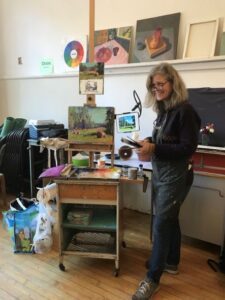 Learn strategies on how to paint loose and free while maintaining solid principles of design. Over the course of this two day workshop, we will work on many different exercises in order to create successful paintings that reflect personal confidence and boldness. The focus will be on obtaining a variety of approaches to add to your “artist’s toolbox”. This will include creating strong compositions, achieving color harmony, and maintaining correct values. We will paint from still life arrangements and photo references.
Learn strategies on how to paint loose and free while maintaining solid principles of design. Over the course of this two day workshop, we will work on many different exercises in order to create successful paintings that reflect personal confidence and boldness. The focus will be on obtaining a variety of approaches to add to your “artist’s toolbox”. This will include creating strong compositions, achieving color harmony, and maintaining correct values. We will paint from still life arrangements and photo references.
Students should bring their own photographic reference of landscapes, cityscapes, marine, people in the landscape, or still life. Lynn will bring some flowers for our exercises, as well, since painting from life is so important.
Oil painters and acrylic painters of all levels will benefit from this workshop. All instruction will be in oil, and will include painting demonstrations by the instructor.
Winter 2023 : Workshop : Introduction to Figure drawing: Kathleen Carey Hall
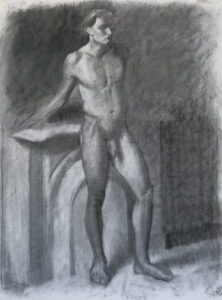 This workshop is designed to give you the confidence to draw the life model, without the need for detailed knowledge of anatomy. We will break down the complex human form into simplified shapes, go over basic measuring and proportions, and emphasize the importance of gesture. Designed with the beginner in mind but suitable for those with prior figure drawing experience as well.
This workshop is designed to give you the confidence to draw the life model, without the need for detailed knowledge of anatomy. We will break down the complex human form into simplified shapes, go over basic measuring and proportions, and emphasize the importance of gesture. Designed with the beginner in mind but suitable for those with prior figure drawing experience as well.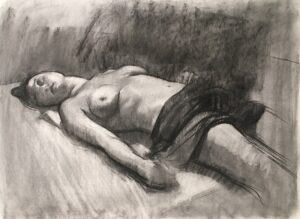
Winter 2023 : Lecture : Impressionism – How a Shocking New Art Movement Came to be and Ushered in Modern Art: Mary Shira
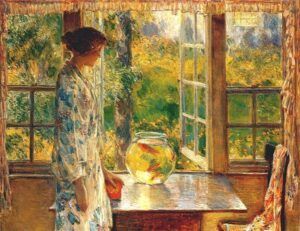
Using lectures and images, we explore how the Neoclassicism of the early 19th Century clashed with Romanticism in the Age of Revolution and culminated in Realism whose ordinary and everyday subjects gave rise to the Impressionist Movement.
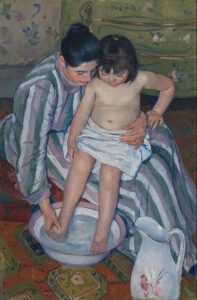
Winter 2023 : Lecture : It All Starts with a Dot – Understanding how artists make art: Mary Shira
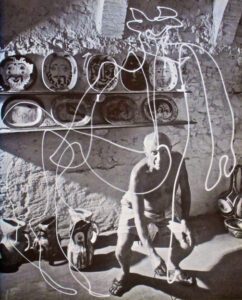
Starting with the basic Elements: Line, Shape, Value and Color we explore how a line when connected becomes a shape and values make that shape three dimensional. Color adds an emotional element that supports the mood of every work of art. Using lecture, images (Powerpoints), handouts and drawing exercises we explore the rewards of making art (communicating visually), heightening our attention (visual awareness), engaging our emotions and building a sense of accomplishment.
